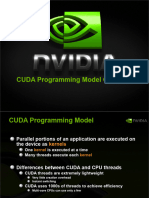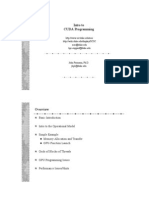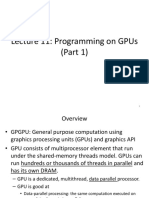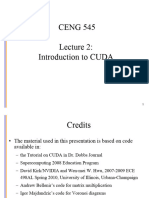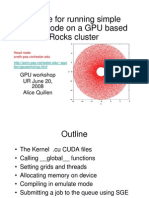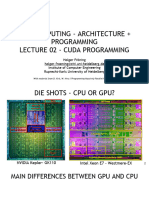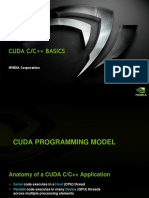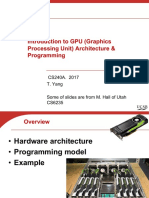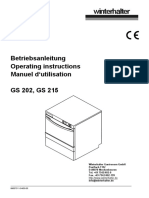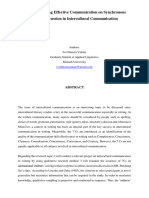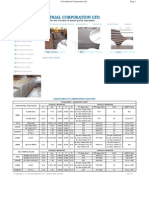0% found this document useful (0 votes)
208 views28 pagesCuda Examples
This document provides an overview of parallel programming with CUDA Fortran. It describes what CUDA Fortran is, shows simple examples of CUDA Fortran code, and discusses features such as variable qualifiers, function/subroutine qualifiers, and kernel loop directives.
Uploaded by
Riccardo FerreroCopyright
© © All Rights Reserved
We take content rights seriously. If you suspect this is your content, claim it here.
Available Formats
Download as PDF, TXT or read online on Scribd
0% found this document useful (0 votes)
208 views28 pagesCuda Examples
This document provides an overview of parallel programming with CUDA Fortran. It describes what CUDA Fortran is, shows simple examples of CUDA Fortran code, and discusses features such as variable qualifiers, function/subroutine qualifiers, and kernel loop directives.
Uploaded by
Riccardo FerreroCopyright
© © All Rights Reserved
We take content rights seriously. If you suspect this is your content, claim it here.
Available Formats
Download as PDF, TXT or read online on Scribd
/ 28





